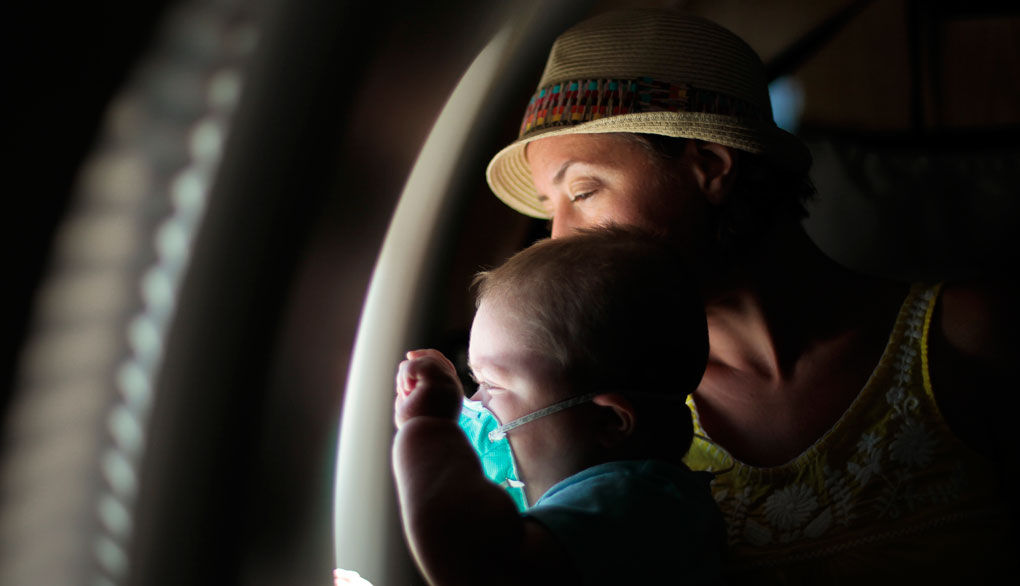
Photography by Chris Rose
Tyler Peryea is a little more than 2 years old, and he’s about to go for an airplane ride with his mom, Jamie. Most 2-year-olds would be pointing at Joe Howley’s big Pilatus PC–12 turboprop and saying “plane, plane.” But Tyler doesn’t say much. In fact, even half an hour after meeting him, all he’s said so far is, “Ho ho.” It means he knows he’s going home and he’s excited for Santa to come. It’s June.
Tyler has hemophagocytic lymphohistiocytosis, or HLH. HLH is a rare blood disorder in which certain types of white blood cells build up in various organs, including the spleen, liver, and skin. They then go about destroying other blood cells. Without treatment, the patient will likely die. HLH usually affects infants and young children.
Today there is a happy ending, or rather a happy chapter in a long story. After spending six months at the best HLH treatment facility in the nation, Tyler is going home—in style. Howley, the chairman of Patient AirLift Services (PALS), has flown from his home airport of Westchester County in White Plains, New York, to Clermont County Airport outside Cincinnati. His plan is to pick up Tyler and Jamie and fly them to North Central State Airport in Pawtucket, Rhode Island. He’ll do this free of charge, donating his time and money simply to transport Tyler home from the hospital.
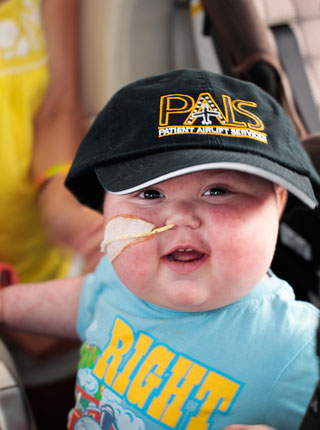
When Howley arrives at the Clermont County Airport, Tyler and Jamie are already there. Tyler is unmistakable. He’s a bit short for his age, but very round. His torso, legs, arms, and face are swollen, making him look like he’s kept the same proportion of fat as a baby, but two years on. But he’s not fat. Jamie says Tyler has eaten no solid food in the past six months. Instead he’s been fed liquid through a tube that’s still in his body and hidden under his clothes. His size is caused by the massive amounts of steroids he has been given.
He’s also wearing a mask. That and the noticeable rash all over his body are the only outward signs that anything is amiss. The mask is necessary because his body is still immune compromised. In fact, today is the first day since coming to the hospital that Tyler has actually been outside. While there, Jamie would take him for walks in a stroller that was covered in a bubble to protect him from germs. This would go on for hours a day. They became friends with security guards, housekeepers, and everyone else on Tyler’s floor. Even though he’s going home, the doctors have instructed Jamie not to let Tyler in the sun for more than a minute or two at a time, which means the window shades on the PC–12 are drawn for most of the trip home.
A very sick little boy
The rash is evidence of Tyler’s long fight with HLH. It began with a simple fever. All kids get fevers. Today you can call a pediatrician’s office and they won’t even see you until the temperature starts to get above about 102 degrees. At 16 months Tyler got his first fever, which is actually quite late. It went high quickly, which can happen—and stayed there. Over the course of the next few days Jamie said she called her pediatrician’s office 45 times. Finally, on day seven, Tyler was admitted to the hospital.
It became clear immediately to the doctors that this was more than a garden-variety fever. Tyler’s heart, liver, and spleen were failing. A number of tests showed two possibilities—leukemia or HLH. Jamie had never heard of HLH. The doctor told her, “Pray it’s leukemia.”
Jamie was told a number of times over the next two weeks that Tyler wasn’t going to make it. They were in the local hospital for seven weeks, and then in out and for another three months before they went to Cincinnati for six months. This is where Tyler would hopefully be cured with a bone marrow transplant. Although the transplant surgery was successful, Tyler’s body began to reject the new marrow over time.

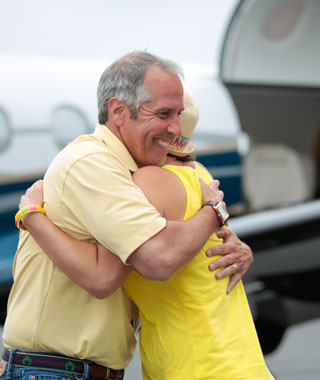
There are four stages of bone marrow transplant rejection. Tyler’s gut and liver rejected the transplant at a stage 3 level, and his skin rejected it at stage 2. The rejection is primarily why Tyler was in the hospital so long, although even a perfectly successful transplant still requires weeks of chemotherapy prior to transplant and lots of monitoring afterward. Jamie says that throughout the recovery Tyler would scream for 18 to 20 hours a day, presumably from the pain, boredom, lack of food, and other rigors of an extended hospital stay. During the worst period his fever was 104 degrees or higher for 47 days straight.
Perhaps it goes without saying that Jamie stayed with Tyler the entire time he was in the hospital. Saying it was a hardship on her family doesn’t begin to tell the whole story. Her husband, Brad, had planned to come out every other week for an extended stay, but the economy took a hit on his office. Fearing the loss of his job and the millions of dollars worth of health insurance associated with it, he ended up spending most of his time at home in Rhode Island more than 800 miles away.
Brad wasn’t alone. He was taking care of their second child, Cameron, who was born only two months before Tyler became ill. Jamie said Tyler was such a good baby that they decided to have another right away. Now, more than a year later, she’s going home to a child she hardly knows and a husband she’s barely seen in a year.
The family has reunited in Cincinnati a few times, including one time for the baby’s first birthday. Because Tyler is immune compromised, there was concern that the visiting family’s time on a commercial flight would expose them to germs that they might transmit to Tyler. So a PALS volunteer flew the family out for the visit. It’s one of many types of flights the organization will undertake.
The thing he gave that mattered most to her was time—the one precious commodity that Howley says all of us have equally, that made her feel special.
Passion to serve
PALS is Howley’s first passion in aviation. It’s why he flies. Even though a PC–12 isn’t the cheapest airplane, Howley uses it more for service than for personal transportation. And there’s no doubt it’s a great airplane for the job. Tyler cruised up and down the aisle the entire trip, using the seats, tables, and galley as handholds along the way. Jamie said it was the most walking he’d done in a year.
People like Tyler are the reason Howley spends so much time and money on PALS. He started the nationwide service organization on Memorial Day 2010. It has since grown to 200 fully vetted pilots, 100 pilot-applicants, and 100 scheduled flights a month.
“We’re trying to make it more of a pilot club,” Howley says. “I want to get away from the single contractor model where you only fly and don’t know anyone else in the organization.” He says that many in the group use the contacts they’ve made to get help with maintenance, instruction, and even nonaviation business networking.
Howley also says he’s trying to avoid what he calls the numbers trap, in which the group’s entire worth is measured in how many flights it makes. Instead, he said, they are trying to truly take the values of the basic service they provide and expand on it to all aspects of the group. To that end, Howley says PALS will take calls on weekends, holidays, at the last minute, and whenever else they’re needed. “That’s our modus operandi,” he says.
The process is simple. A doctor, hospital representative, or social worker alerts the patient to the availability of what they call compassion flights. Then the patient, patient’s family, or medical care professional calls PALS and requests a flight. The call then goes out to the pilots with the airplane that best fits the mission, which is how Howley ended up being dispatched for the long trip from Clermont County to North Central State with Tyler and Jamie. Ultimately the determination as to the safety of the flight is up to the pilot in command.
“They think I’m Chuck Yeager,” Howley says. “There’s no distinction between me and an airline pilot.” His point is that there’s a big obligation for the pilot in these situations. It’s when general aviation transforms from recreation to responsibility.
Although he’s very modest about his role, there’s no question Howley is making a difference in his passengers’ lives. When he started the organization he had a nice leather-bound book made with “PALS” embossed on the cover. He carries it in the airplane and asks guests to sign it. Reading through the book is both uplifting and emotionally draining. There are short thank-you notes. A few people sketched drawings of the airplane or the view of clouds out the window. And then there are some that go on for pages and pages with intimate details of the patient’s condition. You can tell they use it as a form of therapy, a way to let someone know the struggles their loved one has been through. A few are from kids. A young boy named John wrote, “Thank you for driving me to Cinncinaity. This will help me so much I will feel better.”
Howley said one passenger in particular put the entire enterprise into perspective for him. He was flying her home from Richmond, Virginia. She told him it was obvious he could have donated money, sending her the necessary cash to probably even charter an airplane. But the thing he gave that mattered most to her was time. It was that gift of the one precious commodity Howley says all of us have equally that made her feel special, and that perfect strangers could care for each other.
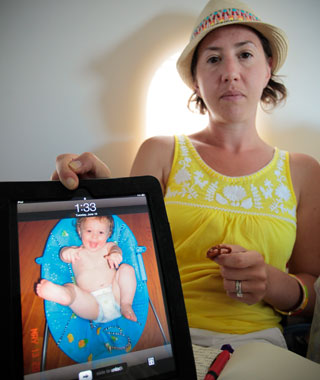
Jamie Peryea shows a photo on her iPad of Tyler before his illness.
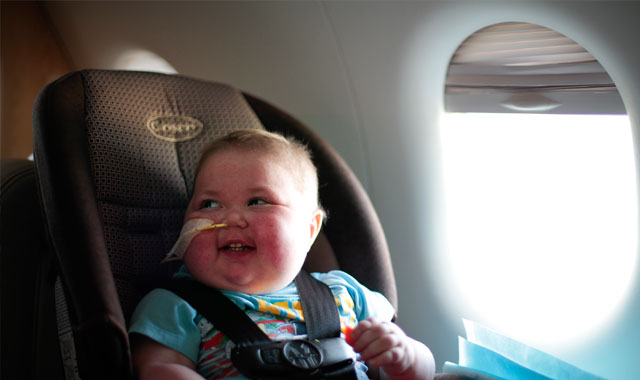
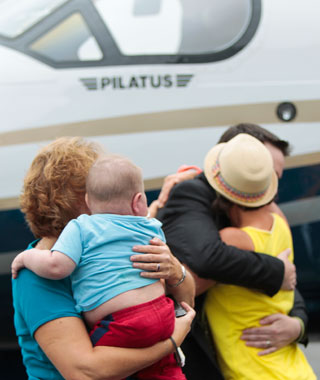
Homecoming
Jamie wrote in the book, too. A full page. She finished on the approach into North Central State. Tyler had just fallen asleep, only three hours or so past his naptime. Throughout the flight he ate voraciously, which made Jamie immensely proud. Mom had come armed with broccoli, red pepper, and milk, all of which he devoured. It constituted the bulk of his solid food intake for the past six months. Although he must have been exhausted from his hospital stay, he was in constant motion, begging Jamie to raise the window shades so he could see outside—which he got to do from almost every seat in the airplane, including the right cockpit seat. Jamie put a headset on him and Howley thoughtfully covered the harsh light with a chart.
Howley’s landing at North Central State was so smooth Tyler didn’t wake up. It wasn’t until they opened the door that he finally stirred.
And there was Brad and his mom, Tyler’s grandmother, Susan Peryea. Brad was speechless, no doubt overwhelmed by the emotion of seeing his son and wife finally come home. Grandma was sobbing. “Welcome home, Tyler. Hi, honey,” she said over and over. There were lots of hugs and group photos. Howley even jumped in on a few.
And then they unloaded the bags, got into the car, and they were gone—home to see what Santa had brought.
After they left, Howley was matter-of-fact. “They aren’t always so happy,” he said. Many are transports to the hospital, of course. At one point Jamie said she and Tyler were so cut off from the world, and the treatment was so hard on both of them that she felt as though she were in a war zone.
This was but one of dozens of flights Howley will take this year, delivering people to and from war zones in Cincinnati, Pittsburgh, Boston, and anywhere else he can spare the time.
Email [email protected]
Fly for PALS
PALS is like many patient flight organizations in that the pilot donates the time and aircraft costs to fly ambulatory patients and their families to and from medical appointments. To be a PALS pilot, you must have a valid medical, 500 hours of flight time, 400 hours of PIC time, 50 hours of PIC in make and model, an instrument rating and be current, and satisfy some insurance requirements and meet general currency guidelines. Howley says that even if a pilot doesn’t meet the requirements, he or she can still help. He suggests anyone who is interested go online or call 888-818-1231. Most pilots will also be able to offset the cost of fuel through the group’s unique fuel reimbursement program open to volunteers.



